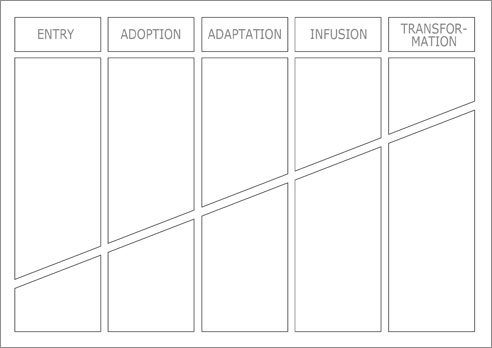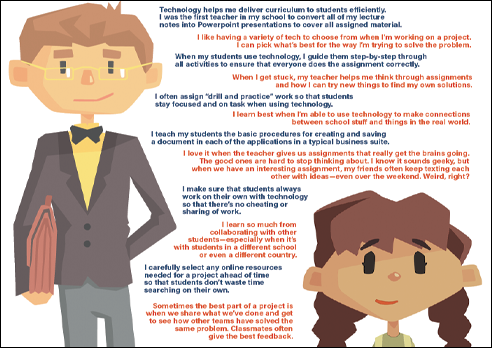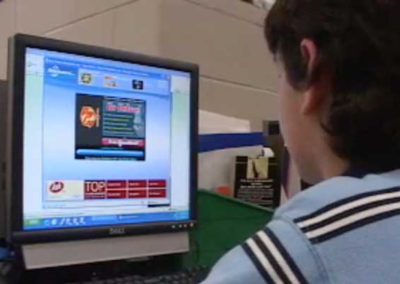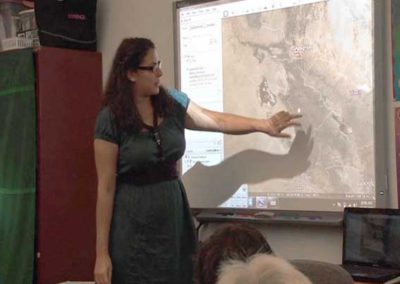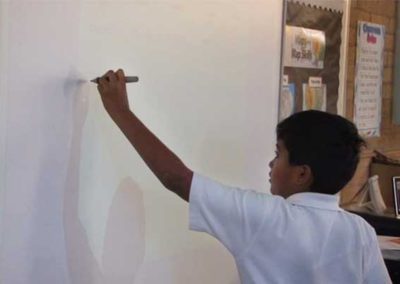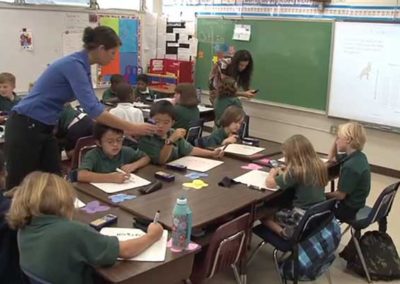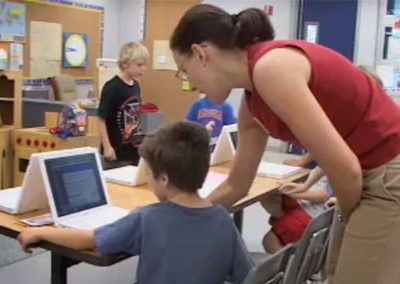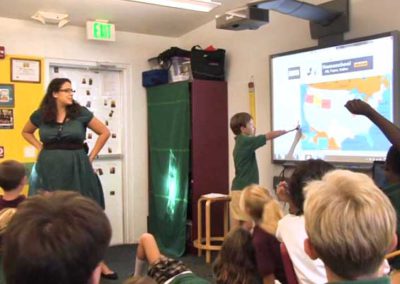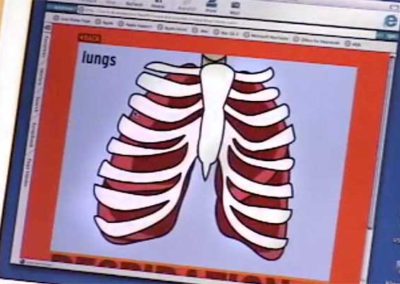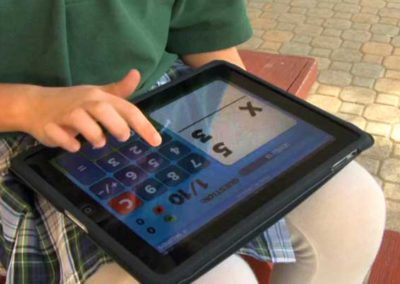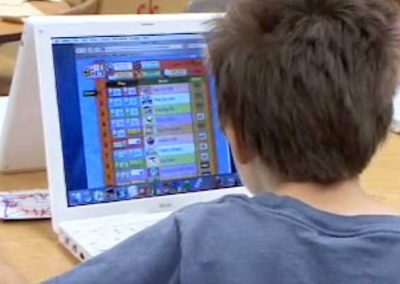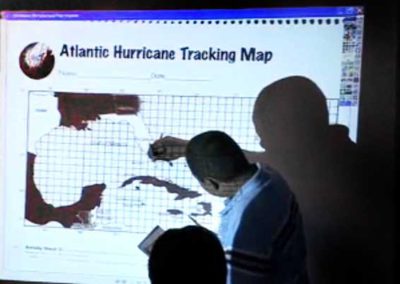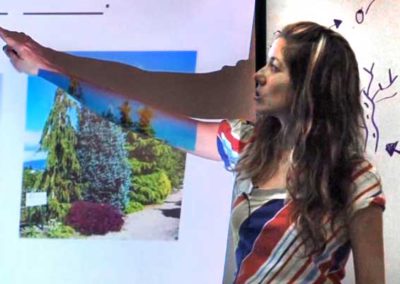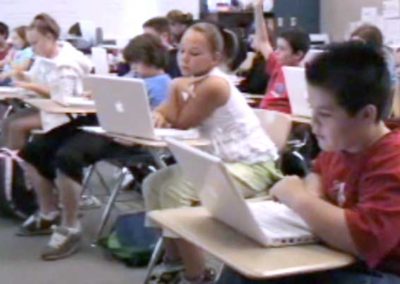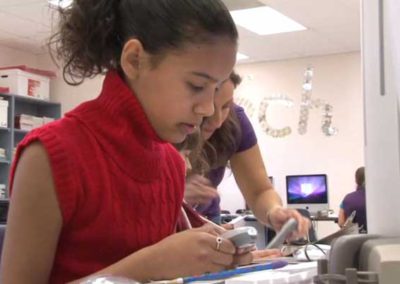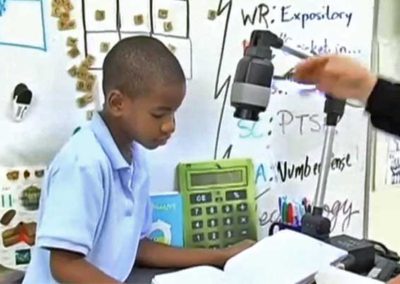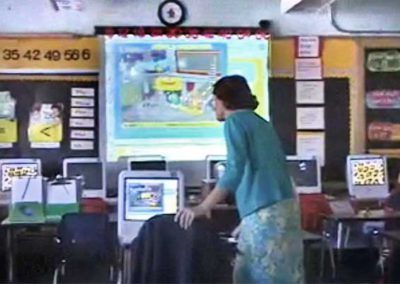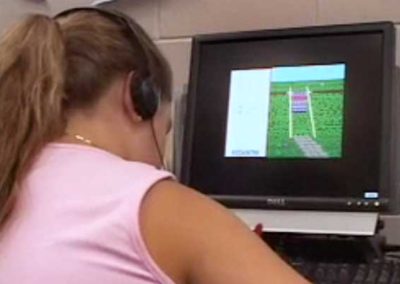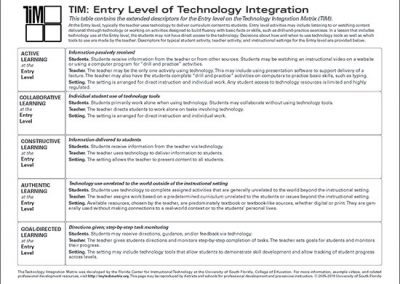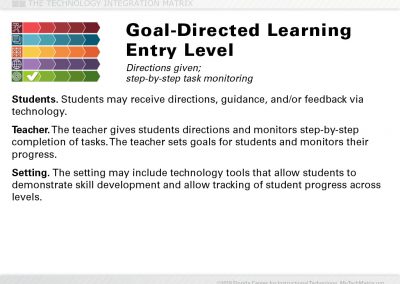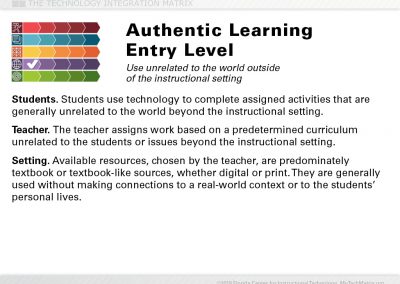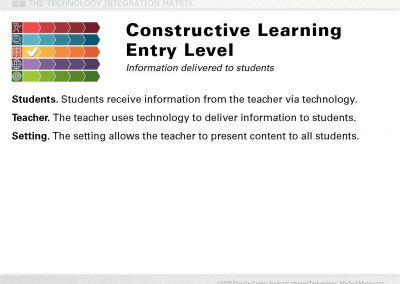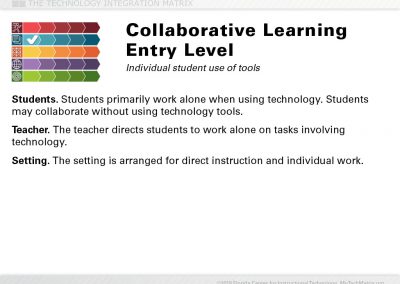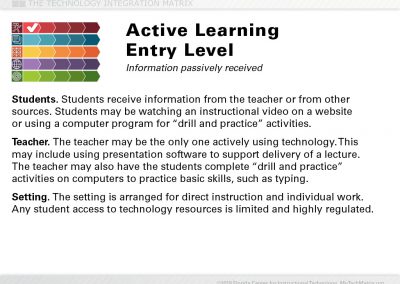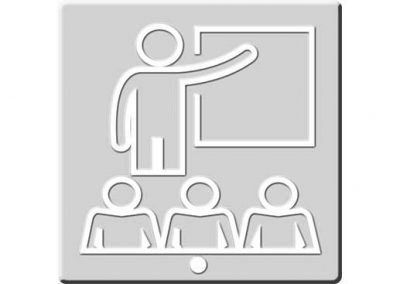The Entry Level
The teacher begins to use technology tools to deliver curriculum content to students.
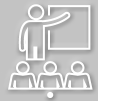 At the Entry level, typically the teacher uses technology to deliver curriculum content to students. Entry level activities may include listening to or watching content delivered through technology or working on activities designed to build fluency with basic facts or skills, such as drill-and-practice exercises. In a lesson that includes technology use at the Entry level, the students may not have direct access to the technology. Decisions about how and when to use technology tools, as well as which tools, to use are made by the teacher.
At the Entry level, typically the teacher uses technology to deliver curriculum content to students. Entry level activities may include listening to or watching content delivered through technology or working on activities designed to build fluency with basic facts or skills, such as drill-and-practice exercises. In a lesson that includes technology use at the Entry level, the students may not have direct access to the technology. Decisions about how and when to use technology tools, as well as which tools, to use are made by the teacher.
This page provides greater detail about the Entry level of the Technology Integration Matrix. To see the entire matrix or to locate other levels, return to the Matrix. Descriptors for typical teacher activity, student activity, and instructional settings at the Entry level are provided below, along with links to all of the Entry level video lesson pages and additional resources.
Entry Level Descriptors for Each of the Five Characteristics
Active Learning
Information passively received
Students receive information from the teacher or from other sources. Students may be watching an instructional video on a website or using a computer program for “drill and practice” activities.
The teacher may be the only one actively using technology. This may include using presentation software to support delivery of a lecture. The teacher may also have the students complete “drill and practice” activities on computers to practice basic skills, such as typing.
The setting is arranged for direct instruction and individual work. Any student access to technology resources is limited and highly regulated.
Collaborative Learning
Individual student use of technology tools
Students primarily work alone when using technology. Students may collaborate without using technology tools.
The teacher directs students to work alone on tasks involving technology.
The setting is arranged for direct instruction and individual work.
Constructive Learning
Information delivered to students
Students receive information from the teacher via technology.
The teacher uses technology to deliver information to students.
The setting allows the teacher to present content to all students.
Authentic Learning
Technology use unrelated to the world outside of the instructional setting
Students use technology to complete assigned activities that are generally unrelated to the world beyond the instructional setting.
The teacher assigns work based on a predetermined curriculum unrelated to the students or issues beyond the instructional setting.
Available resources, chosen by the teacher, are predominately textbook or textbook-like sources, whether digital or print. They are generally used without making connections to a real-world context or to the students’ personal lives.
Goal-Directed Learning
Directions given; step-by-step task monitoring
Students may receive directions, guidance, and/or feedback via technology.
The teacher gives students directions and monitors step-by-step completion of tasks. The teacher sets goals for students and monitors their progress.
The setting may include technology tools that allow students to demonstrate skill development and allow tracking of student progress across levels.
View or print table as PDF:
US Letter
International A4
Understanding TIM Levels
The Invisible Technology Integration Matrix
There are also some “invisible” dimensions to the TIM. The invisible dimensions underlie the movement from left to right.... (Continue reading)
Tech Exploration in the Classroom
The emphasis on not only allowing, but also encouraging, exploration is no accident. In our busy schedules we.... (Continue reading)
What do we mean by “independent access”?
The spirit of independent use is that a student can evaluate a situation and choose the hardware or software that the student thinks will be most.... (Continue reading)
Ownership of Learning with Technology
One of the most important concepts behind the TIM is the ownership of learning. At lower levels of.... (Continue reading)
Entry Level Videos: Active Learning Characteristic
Entry Level Videos: Collaborative Learning Characteristic
Entry Level Videos: Constructive Learning Characteristic
Entry Level Videos: Authentic Learning Characteristic

